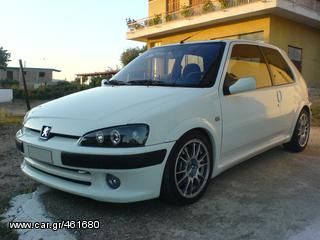Peugeot / Peugeot 106 Rallye 16V

Specs
Worldwide Trends
GEO Interests
Videos / Peugeot 106 Rallye 16V
Αναβαση Κλεισουρα Peugeot 106 Rallye 16V
marinos sport service Peugeot 106 rallye 16v 150hp
Peugeot 106 Rallye (16v) - Sound Test
Peugeot 106 Rallye 16V 0-200kmh
The Peugeot 106 rallye 16v- an overview
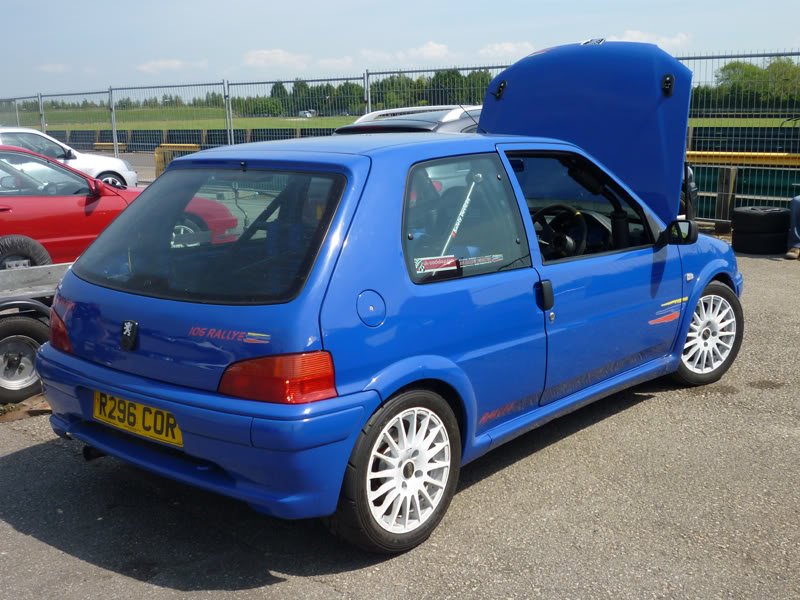 The Peugeot 106 rallye 16v was introduced on 12 September 1991, as the French Marque's entry grade car slotting in beneath the 205, whereas it is now largely considered the accurate replacement to the 205. It was a considerable development of the Citroлn AX stage, intended to make it both heavier as well as safer. It was aimed directly at the Clio by Renault, that had gone into output a year previous, and as a more up to date alternative to the somewhat larger 205 which had been a massive achievement for Peugeot and was still verifying popular almost a ten years after its launch. Like the AX and the 205, the vehicle had all unaligned suspension with Macpherson struts at the front, and very compact transverse torsion bars at the back. A winning applaud for its attractive modern fashioning, comfortable travel, very good handling and bargain running charges, the 106 quickly became well liked.
The Peugeot 106 rallye 16v was introduced on 12 September 1991, as the French Marque's entry grade car slotting in beneath the 205, whereas it is now largely considered the accurate replacement to the 205. It was a considerable development of the Citroлn AX stage, intended to make it both heavier as well as safer. It was aimed directly at the Clio by Renault, that had gone into output a year previous, and as a more up to date alternative to the somewhat larger 205 which had been a massive achievement for Peugeot and was still verifying popular almost a ten years after its launch. Like the AX and the 205, the vehicle had all unaligned suspension with Macpherson struts at the front, and very compact transverse torsion bars at the back. A winning applaud for its attractive modern fashioning, comfortable travel, very good handling and bargain running charges, the 106 quickly became well liked.
Features
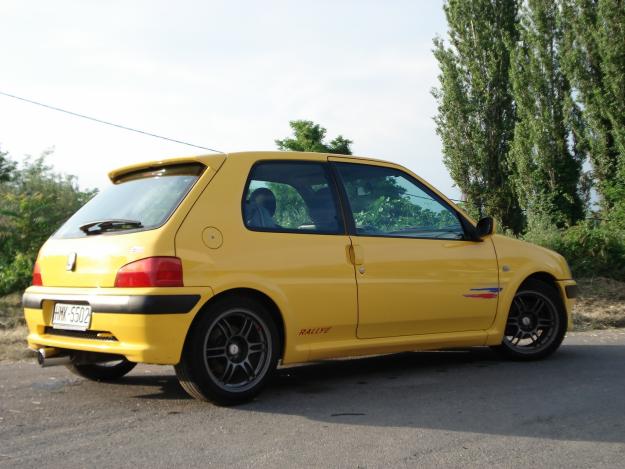 Trim grades were rudimentary XN, mid-range XR, top-spec XT, and the sporty XSi form mentioned above. In addition, from the year1994 onwards there was a "Rallye" form offered. This was distinct from the XSi form with the TU2 series 1.3 litre petrol injection engine (100 PS (74 kW)), and was only accessible in red, white or very dark. This exposed out type was conceived for the sporting person driving, and had little in the way of animal comforts, such as electric powered windows or power aided guiding. On the phase 1 model, a sunroof and anti secure brakes were the only choices accessible from the factory, whereas numerous came with fog lights or spoilers from the XSi forms.
Trim grades were rudimentary XN, mid-range XR, top-spec XT, and the sporty XSi form mentioned above. In addition, from the year1994 onwards there was a "Rallye" form offered. This was distinct from the XSi form with the TU2 series 1.3 litre petrol injection engine (100 PS (74 kW)), and was only accessible in red, white or very dark. This exposed out type was conceived for the sporting person driving, and had little in the way of animal comforts, such as electric powered windows or power aided guiding. On the phase 1 model, a sunroof and anti secure brakes were the only choices accessible from the factory, whereas numerous came with fog lights or spoilers from the XSi forms.
Modifications that were made
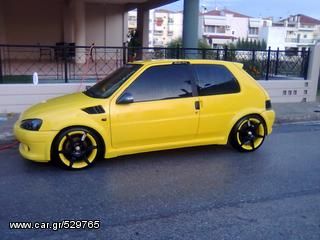 In early 1996, the Peugeot 106 furthermore formed the cornerstone for the near equal examines and size Citroлn Saxo, and at this time the 106 obtained a facelift which glimpsed all motors get fuel injection publicity gear grades raised. The XSi was dropped in favor of the new GTi form with a 1.6 16v engine.
In early 1996, the Peugeot 106 furthermore formed the cornerstone for the near equal examines and size Citroлn Saxo, and at this time the 106 obtained a facelift which glimpsed all motors get fuel injection publicity gear grades raised. The XSi was dropped in favor of the new GTi form with a 1.6 16v engine.
Further changes that were made
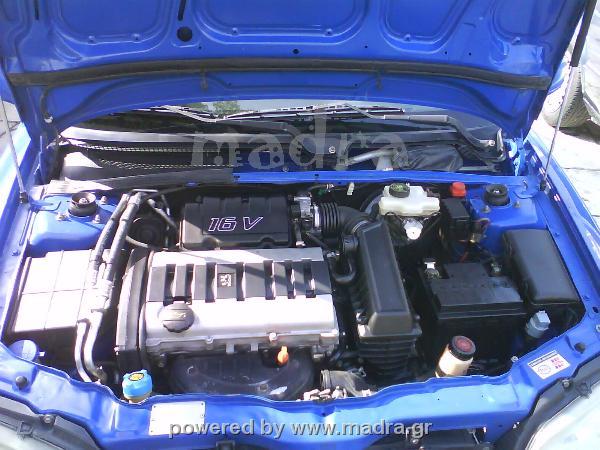 From 1997–98, the stage 2 Rallye was offered, and these combined the lightweight, nimble chassis of the stage 1 Rallye, with a 1.6 litre gasoline injection motor (TU5J2, 103 PS (76 kW)) and updated examines and security characteristics of the later models (1996–1999). Optional Extras on the stage 2 Rallye were; Power aided steering, airbag and a sunroof. It should be noted that in some European markets (e.g. Greece) the stage 2 Rallye taken up the GTi's 1.6L 16v engine performing 120hp from 1998 onwards. That increased its sales and made the car probably the hottest small hatch at that time.
From 1997–98, the stage 2 Rallye was offered, and these combined the lightweight, nimble chassis of the stage 1 Rallye, with a 1.6 litre gasoline injection motor (TU5J2, 103 PS (76 kW)) and updated examines and security characteristics of the later models (1996–1999). Optional Extras on the stage 2 Rallye were; Power aided steering, airbag and a sunroof. It should be noted that in some European markets (e.g. Greece) the stage 2 Rallye taken up the GTi's 1.6L 16v engine performing 120hp from 1998 onwards. That increased its sales and made the car probably the hottest small hatch at that time.
At the end of 1998, the Peugeot 106 variety was reduced to the 1.1 L gasoline (Independence, XN, XL, XT Look or Zest 1/2/3), 1.4 gasoline (XR, Roland Garros), 1.6 8v gasoline (XS or Rallye) and 1.5 L diesel (XND) models as well as the 1.6 16v gasoline (GTi/S16). This was due to the launch of the bigger 206, which was ablr to steal numerous sales from the 106. Peugeot initially proposed to phase out the 106 and market the 206 as its replacement, but later determined to replace the Peugeot 106 rallye 16v with another all-new form.







